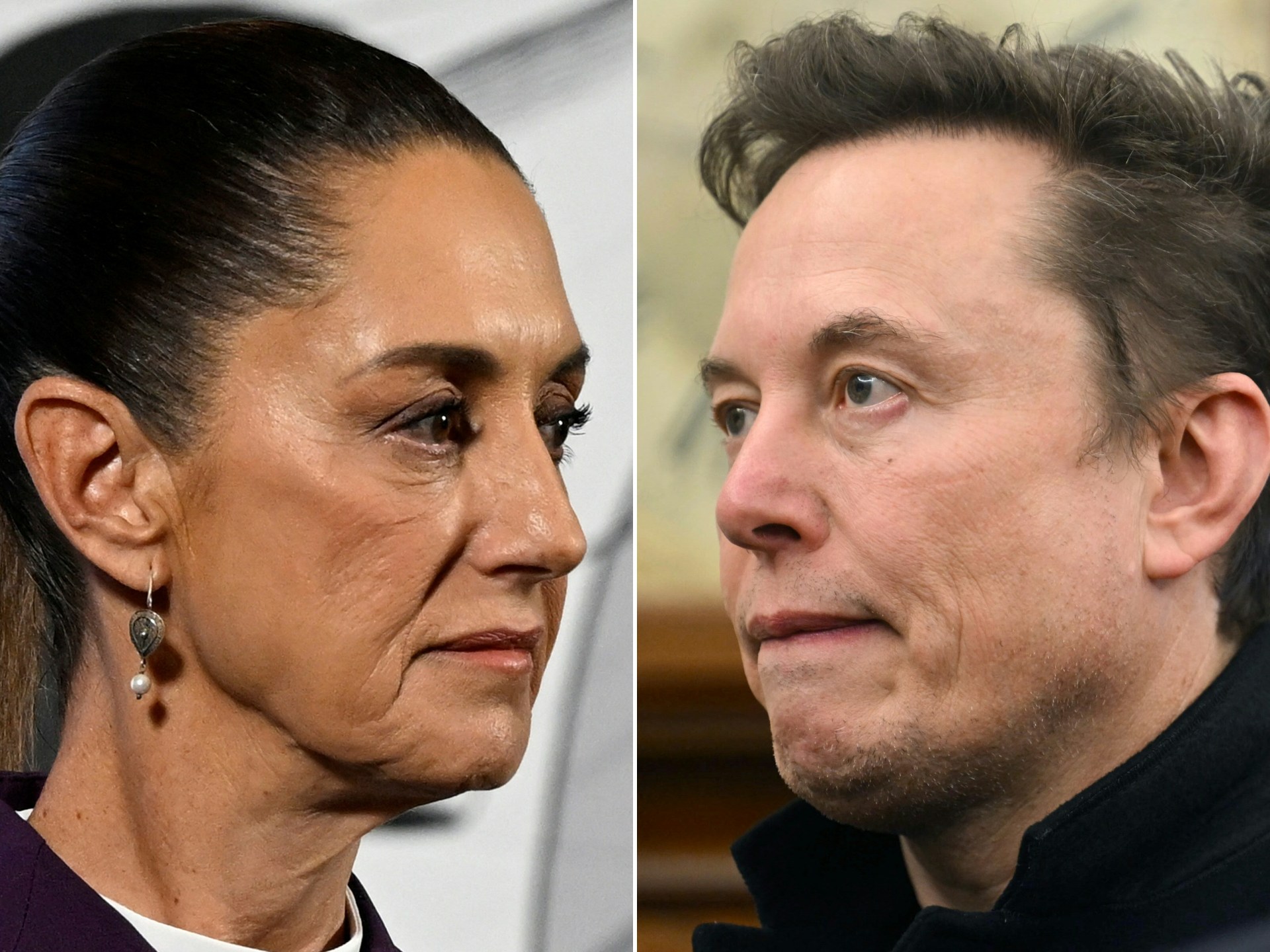Claudia Sheinbaum, the president of Mexico, has threatened to sue SpaceX and Elon Musk for falling debris from a rocket launch across the American border.
According to SpaceX, “trespassers” had hampered its attempts to retrieve debris from Mexico.
What is happening between SpaceX and Mexico is explained more here.
What transpired?
A SpaceX “Starship” rocket detonated in a massive fireball during a routine launch test in Texas on June 19 as part of Elon Musk’s plan to launch people into space.
The majority of the steel used to make starship rockets is made of stainless steel, measuring 120 meters (400 feet).
At 04:00 GMT, the rocket, known as the Starship 36, “catastrophic failure and exploded” at the Starbase launch facility, according to Cameron County authorities.
In Cameron County, Texas, close to the US-Mexico border, the facility is located at Starbase, which was formerly Boca Chica Village.
What is Mexico’s position on contamination?
Sheinbaum stated in her morning press conference on Wednesday that “there is indeed contamination” in Mexico following the SpaceX explosion.
She claimed that Mexican authorities are looking into the negative impact Tamaulipas, which is located less than 300 kilometers (190 miles) from Starbase.
Americo Villarreal Anaya, the governor of the Tamaulipas, claimed that authorities were looking into “the internationally required distances are being respected in order to have these types of facilities, so that there is no risk to urban centers.”
Sheinbaum said, “We are reviewing everything that comes with the launch of rockets that are very close to our borders.”
She continued, “Mexico is currently attempting to determine whether international laws have been broken so that it can file the necessary lawsuits.”
What is said by SpaceX?
In an X-post on Thursday, SpaceX claimed that delays had prevented its recovery of the fallen debris from Mexican soil.
The X account stated that despite SpaceX’s efforts to recover the anomaly-related debris, which is and continues to be SpaceX’s tangible property, unauthorised parties have been attempting to trespass on private property. It did not specify who these individuals were or what “trespassing” they were.
Additionally, SpaceX added that the rocket debris “no risks to the surrounding area.” “Previous independent tests on the materials used in Starship, including toxicology analyses, confirm that they don’t pose any chemical, biological, or toxicological risks.
The Mexican government has reportedly requested local and federal assistance with the recovery, it continued.
The surrounding area is safe from any danger, as previously stated. Materials inside Starship have previously been subject to independent tests, including toxicology analyses, which established that they don’t pose any chemical, biological, or toxicological risks.
And as is the case with all tests, there is a safety check https://t.co/lJHGInE5vj.
Where else did SpaceX rockets detonate?
The US Federal Aviation Administration approved SpaceX’s request to increase the number of Starships it launches annually from five to 25 in May.
A Starship prototype exploded over the Indian Ocean later that month.
Two Starships collided before that during test flights in January and March when they first flew out of Texas . Airlines were forced to divert flights in January to avoid falling debris.
Does the Earth risk being harmed by space debris?
A 500 kg (1, 100 kg) metallic object fell on a village in Makueni county, Kenya, 115 kilometers (70 miles) southeast of Nairobi in January of this year. The debris, according to the Kenyan space agency, was a spacecraft fragment.
A Russian rocket making its second attempt into the Earth’s atmosphere was predicted to fall into international waters off the southeast coast of Tasmania on March 3th, according to an advisory from the Australian Space Agency. The agency claimed the following day that it had “observed a space debris re-entry over the southeast coast of Tasmania” but was “unaware of any reports or sightings of the debris.”
In general, there is very little chance that space debris will pose a threat to people, aircraft, or the Earth. However, recent studies have revealed that space debris is getting more and more common.
Uncontrolled re-entries of rocket bodies or space debris into the Earth are on the rise, according to a study by Canadian researchers at the University of British Columbia in January 2025, which may increase the risk of collision for aircraft.
The European Space Agency (ESA) released a separate study in March this year, titled The Space Environment Report, which found that at least three “intellectual” objects are reintroduced onto Earth every day. This is in addition to the numerous space debris fragments that are deposited on Earth.
There are millions of pieces of space debris in the Earth’s orbit, according to NASA’s warning, but there are no laws governing how to remove it.
Source: Aljazeera

Leave a Reply